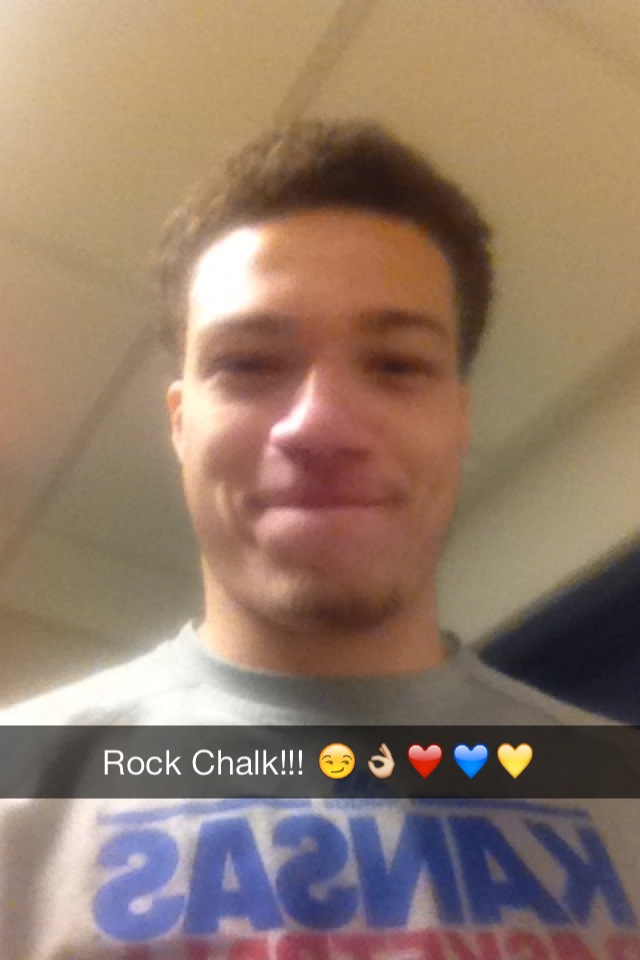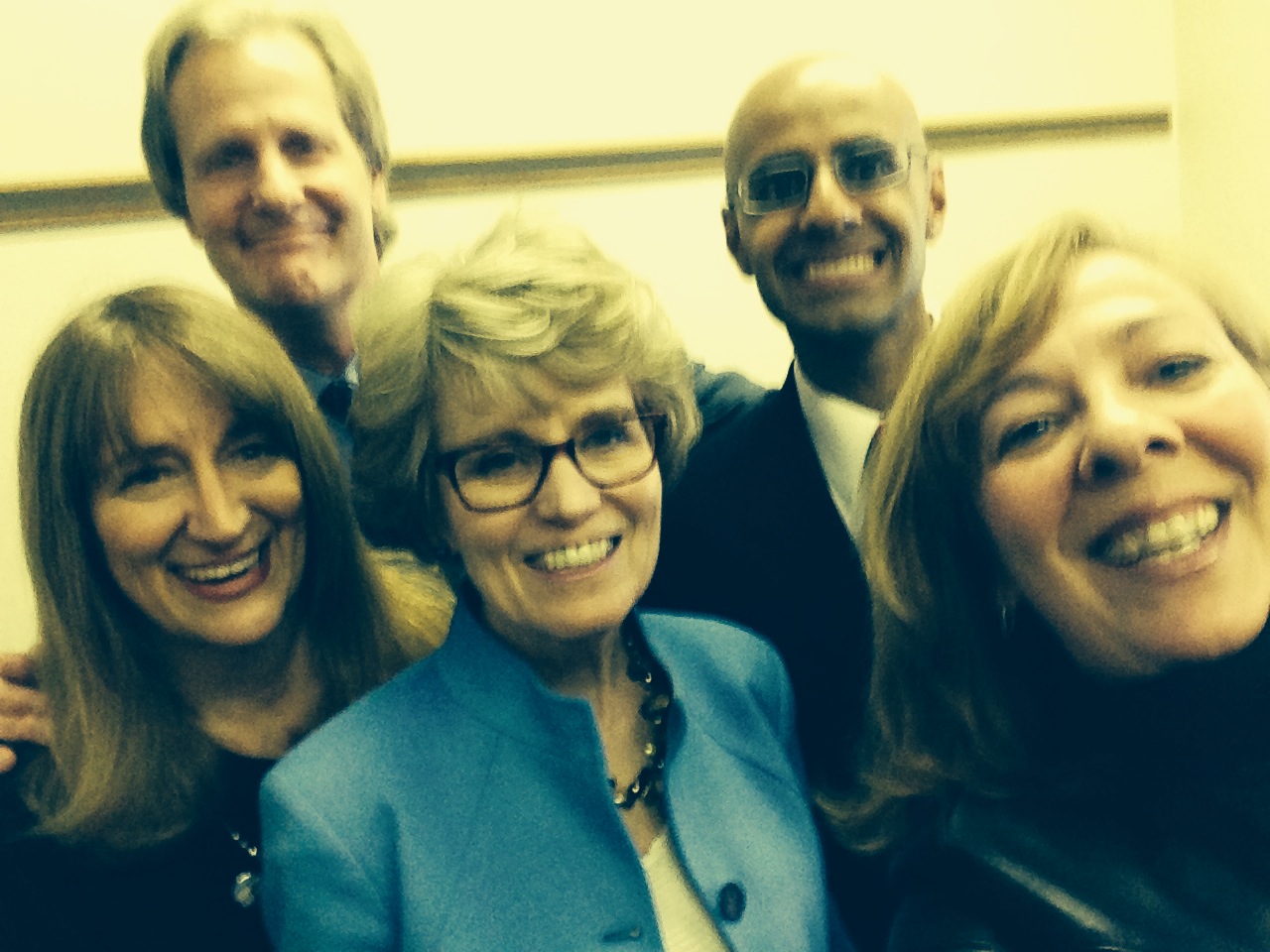
When thousands of anxious high school seniors finally find out whether they’ve been accepted at the colleges of their choice over the next few weeks, one of the first things many of them will do is share those admissions letters and emails with friends using Snapchat, the mobile app for sending photos and videos that disappear in 1 to 10 seconds. But wouldn’t it be great if universities would just send applicants that all-important yes or no directly via Snapchat? That’s not as far fetched as it sounds. Those bulky promotional brochures and emails are starting to look kinda old school, and university and college officials are looking for new ways to reach out to a generation raised on smartphones and instant image-based apps like Instagram and Snapchat.

Colleges have been Instagramming and texting students for a while, but with Snapchat, which is image-based, they’re taking another step in communicating with Generation Y in their own language–albeit one that was originally known as a way to exchange sexy photos. And because users have to press and hold a Snapchat image with their fingertips to see it, the engagement is demonstrable.
TIME spoke to six colleges and universities that have started Snapchat accounts within the past six months to woo prospective students, publicize campus events, cheer on athletes in the NCAA men’s basketball tournament, and — at least in the case of an unofficial account run by a student — build a sense of community at a large, sprawling school. Sports fans enthusiastically scribble over photos in school colors using their fingertips and reply with Snaps of themselves everywhere from dorms to libraries to classrooms.
The University of Michigan started the uofmichigan Snapchat account on Feb. 26 after reading that 77% of college students use Snapchat daily, according to a survey of 1,650 responses conducted by Sumpto, a network of college students who promote brands on social media. (Snapchat itself doesn’t release demographic data.) And Tennessee Wesleyan College (TWC), a private, small liberal arts college in Athens, Tenn., which publicly debuted its Snapchat account on Oct. 8, 2013, is running a Snapchat scavenger hunt for prospective students during an April 12 orientation day. Participants who follow the account TWC_Snaps will be Snapped five hints about where to find “Wesley”, TWC’s bulldog mascot, on campus.
“Of course you want the prestigious acceptance letter, but I think students also enjoy having the wall brought down and being able to communicate with the institution that they have chosen,” says Brittany Shope, the Web Coordinator at TWC who started TWC_Snaps. Sending Snaps to prospective students could be more effective than sending promotional brochures and mailers to a generation raised on instant mobile communication. “They may see something in the mail and throw it away, but they are always looking at their phone.” To view a Snap, you have to keep your fingertip on the image until it disappears, which indicates real engagement.
Athletic recruiters are getting into the act too. In fact, beginning August 1, 2014, coaches for all Division I sports — with the exception of football, track and field, and swimming and diving — will be allowed to send Snapchats to prospective student-athletes during the recruiting process, prior to a prospective student-athlete signing an offer, a NCAA spokesperson told TIME in an email. Email and similar modes of communication — such as direct messaging on Twitter or Facebook or Instagram — are permitted in recruiting for all sports.
“Snapchat has a very personal feel because when you get a Snap, it’s sent to you, as opposed to just showing up on your Facebook or Twitter feed, and if you stumble across it, you stumble across it, but if you miss it, so be it,” says Kyle Bruce, Assistant Sports Information Director & Social Media Coordinator who manages the ewuathletics Snapchat account at Eastern Washington University, a Division I school. “A Snap from a coach sent right to that [prospective] student-athlete is a whole different level of a connection, so maybe you send something to a recruit that you’re really interested in, and it becomes kind of a prestige thing. Maybe the athletes would think, ‘Hey, they sent me a personal Snapchat, and nobody else got this!'”

Kyle Babson, Strategic Communications Manager at the University of Kansas who oversees the athletics department’s social media platforms, says while recruiting via Instagram has been a “huge deal” for the University of Kansas in the past six months, the jayhawks Snapchat account is primarily being used to give current students and longtime fans a behind-the-scenes glimpse of life as a student-athlete — from the locker room during the Big 12 tournament in Kansas City to the Wagnon-Parrott Athletic Center, where student-athletes hang out and can usually be persuaded to record mock sideline interviews for Snaps, winking at the camera as they tell fans to come to the next game. “On the court, they’re very professional, but off the court, they’re a hilarious group of guys, and Snapchat allows them to show that side,” says Erin Brogan, a junior journalism major at the University of Kansas, who runs the jayhawks Snapchat account.
And in the walk-up to the NCAA men’s basketball tournament, KU sent Snaps on Mar. 17, the day after “Selection Sunday,” encouraging students to fill out their brackets and root for the jayhawks. While the athletics department did not end up using the account during the games, Wichita State Athletics — goshockers on Snapchat — sent Snaps showing the Shockers team getting off of the bus in St. Louis last week and studying videos of plays with coaches in the locker room of the Scottrade Center before the Mar. 21 game against Cal Poly.
And beyond the sports arena, these colleges and universities are finding Snapchat useful for advertising all campus happenings. When classes at the University of Houston were canceled on Jan. 24 and Jan. 28 because of icy road conditions, the University of Houston’s Snapchat account, uhouston, sent Snaps notifying its followers. Knowing that college students are more likely to show up when there is free stuff, the account is used to Snap locations where pizza and t-shirts are being given away on campus. The University of Michigan recently used it to share a celebrity sighting earlier this month, sending a Snap of Jeff Daniels, actor and local resident, taking a selfie with administrators at a reception honoring outgoing president Mary Sue Coleman.

In contrast to the Snapchat accounts run by schools’ public relations offices, a junior at New York University’s College of Arts and Sciences has started an unofficial NYU Snapchat account called NYUsnaps, taking screenshots of the most clever Snaps and then posting them on a Facebook page to show what campus life is really like. Boasting more than 6,000 followers since launching Feb. 4, the page is a visual version of the viral “Compliments” and “Secrets” pages at NYU and other colleges and universities worldwide in which students anonymously submit candid, often brutally honest thoughts about other members of the community. So far the most popular Snaps have been scenes on campus, from celebrity sightings like the Glee cast filming in Washington Square Park, to witty ones like men in yellow rain suits shoveling snow with text that says “Why r Walt and Jesse shoveling snow” (the meth dealers on Breaking Bad), to a trash can covered with white stickers of the Apple logo with the caption “NYU so rich even our trash cans are apple.”
The NYU Snaps founder, who asked to remain anonymous because the project may violate university policies, says the account does get bombarded with drug-related Snaps of “cocaine, methamphetamines, and pills” — and perhaps people shamelessly send them because they know that the messages will disappear. The page does not have a problem publishing Snaps of “alcohol and marijuana,” but will take any down if the students who appear in them are afraid that they will be recognized. And some nights, users send Snaps asking all sorts of questions about the creator’s life because they “just want to have someone to talk to.” NYU Snaps is supposed to help make a sprawling city school more intimate. “When people first arrive at this school, they come to the realization that being a student at NYU can be incredibly exciting, but also really daunting, and at times, pretty lonely because we don’t have a campus,” the creator says. “I wanted to strip away a lot of that anxiety that affects students and say, ‘Listen, you go to school with over 40,000 amazing people, and you can get to know them through self-deprecating humor and guilty pleasures.” Similar Snaps pages have been started for the University of California schools, the University of Massachusetts, and the University of British Columbia.
So what’s next? Will more and more college admissions offices join Snapchat and Snap application deadlines and reminders? Will student organizations join to advertise campus activities, or dining services Snap the meals of the day? Perhaps professors who take weeks to grade assignments will finally put their antsy students at ease and just Snap grades individually to students, writing out exam and essay grades in the color red with their finger tips? It’s all possible.
But what about sexting? Will university officials be bombarded with inappropriate pictures? The Sumpto survey also says only 2% of respondents use Snapchat to send sexts and inappropriate messages, something users might dispute, but it does give administrators some comfort. And in October 2013, the Pew Research Internet Project, which measured Snapchat use for the first time, reported “it is especially popular among cell owners ages 18-29, 26% of whom use the app.” Plus the numbers of image chats, whether it’s Snapchat or some successor, is likely to rise as another generation raised on smartphones starts the college application process.
As Erin Brogan, manager of KU’s jayhawks Snapchat, put it, “Selfie Sunday is not just on Sunday anymore. It’s everyday.” So the real risk might be that Snapchat becomes so popular as an official method of communication, Snaps start to seem more like spam. But by then, there will probably be another app leaving universities to play catch up again.
More Must-Reads from TIME
- Donald Trump Is TIME's 2024 Person of the Year
- Why We Chose Trump as Person of the Year
- Is Intermittent Fasting Good or Bad for You?
- The 100 Must-Read Books of 2024
- The 20 Best Christmas TV Episodes
- Column: If Optimism Feels Ridiculous Now, Try Hope
- The Future of Climate Action Is Trade Policy
- Merle Bombardieri Is Helping People Make the Baby Decision
Write to Olivia B. Waxman at olivia.waxman@time.com